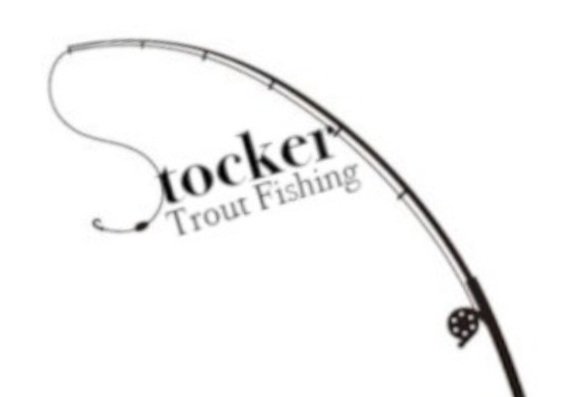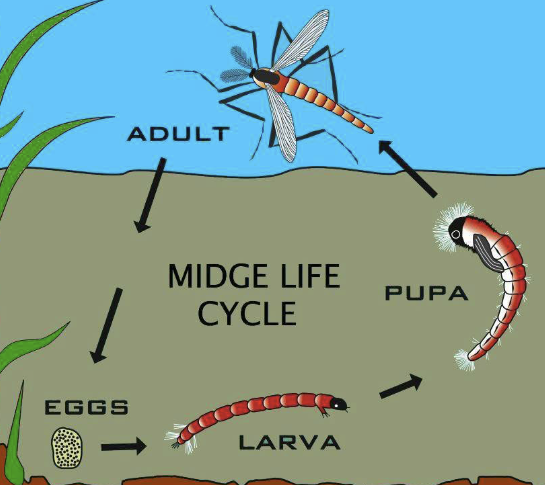What is a Fly Fishing Midge?
Fly fishing is an angling method that relies on the use of artificial flies to catch fish. One of the most effective and versatile types of flies used in fly fishing is the midge. In this article, we'll explore what a midge fly is, their life cycle, popular midge patterns, and how to use them effectively in your fly fishing adventures.
Midge Size and Identification
Midges are tiny insects belonging to the Chironomidae family. They are often mistaken for mosquitoes due to their similar appearance, but midges are typically smaller and do not bite. Midges can be found near water bodies such as rivers, lakes, and streams. They are an essential food source for many fish species, making them a popular choice for fly fishers.
Midge Fly
Midge size varies depending on the species and stage of their life cycle, with adult midges typically ranging from 2mm to 10mm in length. When choosing a midge fly for fly fishing, it's essential to consider the size of the natural midges present in the environment you're fishing in. Matching the size, color, and appearance of the local midges can significantly improve your chances of success.
Midge Life Cycle and Fly Fishing
Life Cycle of the Midge Fly
Understanding the midge life cycle is crucial for fly fishers, as different stages of the midge's life cycle require different fly patterns and fishing techniques. The midge life cycle consists of four stages: egg, larva, pupa, and adult.
Egg: Midge eggs are laid in masses on or near the water's surface. At this stage, they are not targeted by fish and are generally not relevant to fly fishers.
Larva: Midge larvae hatch from the eggs and live in the water, typically among aquatic plants or sediment. They are slender, segmented, and often brightly colored. During this stage, midges are a crucial food source for fish and are imitated by many midge larva fly patterns.
Pupa: As midges transition from larvae to adults, they enter the pupal stage. Midge pupae are encased in a protective covering and often drift in the water column, making them vulnerable to fish predation. Midge pupa patterns are designed to imitate this stage of the midge life cycle.
Adult: Adult midges emerge from the pupal stage and float on the water's surface to dry their wings. During this stage, they are an easy target for fish, and dry midge patterns are used to mimic adult midges on the water's surface.
Popular Midge Fly Patterns
Midge Fly Pattern
Fly fishers have developed numerous midge fly patterns to imitate the various stages of the midge life cycle. Some popular midge patterns include:
Zebra Midge: A simple yet effective pattern that mimics the midge larva stage. It features a slender body with alternating bands of color, representing the segmentation of the larva.
Mercury Midge: A pupa imitation with a bead head that represents the air bubble often seen in midge pupae as they ascend in the water column.
Griffith's Gnat: A dry fly pattern that imitates adult midges on the water's surface. This pattern uses peacock herl and grizzly hackle to create the appearance of a tiny, struggling midge.
Midge Fly Fishing Rig
When fly fishing with midges, it's essential to choose the right rig for the conditions and the stage of the midge life cycle you're trying to imitate. Some common midge fly fishing rigs include:
Dry-dropper rig: This rig features a dry fly (such as a Griffith's Gnat) on the surface with a nymph or pupa imitation suspended beneath it. The dry fly acts as an indicator, signaling when a fish takes the submerged midge imitation.
Nymphing rig: This rig is designed for fishing midge larva and pupa patterns below the surface. It typically involves a weighted nymph or pupa pattern, with or without a strike indicator. The rig can be adjusted for depth based on where the fish are feeding in the water column.
Streamer rig: While not as common, some anglers use midge patterns in tandem with streamers to target larger fish feeding on midges. This rig involves attaching a midge pattern as a dropper to the bend of the hook on a streamer fly.
How to Use Midges Under an Indicator
Using midges under an indicator can be an effective way to detect subtle strikes from fish when fishing with midge larva and pupa patterns. To use midges under an indicator, follow these steps:
Attach a strike indicator to your leader, adjusting the distance between the indicator and the fly based on the depth at which fish are feeding.
Tie on a midge larva or pupa pattern to the end of the leader.
Cast the rig upstream of the target area, allowing the midge pattern to drift naturally with the current.
Watch the indicator closely for any sudden movements, as this may indicate a fish taking the fly. If the indicator moves, set the hook gently and be prepared for a fight.
Choosing the Right Midge Size for Different Fish
Different fish species and sizes may prefer different midge sizes. Here's a simple chart to help you choose the appropriate midge size based on the type of fish you're targeting:
Midge Size Chart
| Fish Species | Recommended Midge Size |
|---|---|
| Trout | #18-#24 |
| Grayling | #20-#26 |
| Whitefish | #16-#22 |
| Panfish | #14-#20 |
Tips for Successful Midge Fly Fishing
Midge fly fishing can be challenging due to their small size and the subtle nature of fish strikes. However, by keeping these tips in mind, you can increase your chances of success:
Observe the natural midges: Before tying on a midge fly, take a moment to observe the natural midges in the environment. Note their size, color, and stage of the life cycle. Choose a fly pattern that closely resembles the natural midges to improve your chances of fooling fish.
Match your tippet size: When fishing with small midge patterns, it's crucial to use a fine tippet to avoid spooking fish. Lighter tippets in the 5X to 7X range are typically suitable for most midge patterns.
Use stealth and patience: Fish can be easily spooked when feeding on midges. Approach your target area slowly and quietly, and avoid casting shadows over the water. Be patient when waiting for strikes, as fish may take their time to decide whether to eat a midge.
Monitor the water temperature: Midges are more active in cooler water temperatures, typically below 50°F (10°C). Pay attention to the water temperature and consider switching to midge patterns when temperatures drop.
Fish during peak activity times: Midges tend to be most active during the early morning and late evening hours. Fish are more likely to be feeding on midges during these periods, so plan your fishing sessions accordingly.
By understanding what a midge fly is, the different stages of its life cycle, and how to use midge patterns effectively, you can significantly improve your chances of success on the water. By selecting the right midge size, using the appropriate rig, and employing stealth and patience, you'll be well on your way to mastering the art of midge fly fishing.
Conclusion
In conclusion, midge fly fishing is a rewarding and challenging aspect of the sport that can lead to impressive catches when executed correctly. By understanding the midge life cycle, selecting the right fly patterns, and employing appropriate techniques, you can tap into the potential of these small yet essential insects in the aquatic ecosystem. Observing the natural midges and adapting your approach based on their size, color, and behavior will greatly enhance your success on the water. So, gear up with the right equipment, arm yourself with the knowledge shared in this article, and enjoy the unique and satisfying experience of midge fly fishing. Tight lines and happy fishing!



